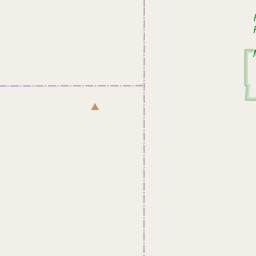Manifest Destiny
Historical marker location:
Hagerman, Idaho
( Marker can be reached from Bell Rapids Road near Upper Salmon Falls Road, on the left when traveling west.)







© OpenStreetMap contributors
Loading...
Searching for other points of interest within 3 miles of this location.Idaho was the first state to have a complete statewide system of television broadcasting. KIDO-TV, now KTVB, began broadcasting in Boise in 1953, and within a few years, the entire state was covered by a network of television stations.
About Gooding County
Gooding County Timeline
Gooding County is located in the southern part of Idaho and was established on January 28, 1913. The county was named after the prominent Frank R. Gooding, who was the 7th governor of Idaho and a senator. The history of Gooding County begins with the arrival of European settlers in the late 19th century. The area was initially inhabited by Native American tribes, such as the Shoshone and Bannock.
The development of Gooding County was primarily driven by the construction of the Oregon Short Line Railroad in the early 20th century. The railroad played a crucial role in opening up the region to trade and transportation, leading to a rapid influx of settlers. The county seat, Gooding, was named after the influential Gooding family, who played a significant role in the development of the town and the county.
Gooding County experienced a boom in agriculture during the early 20th century. The fertile soil and favorable climate made the area ideal for farming, particularly for growing crops like potatoes, alfalfa, and sugar beets. The establishment of irrigation systems further enhanced agricultural production. The county became known for its robust agricultural industry, attracting farmers and ranchers to settle in the area.
Over the years, Gooding County has faced various challenges, including economic downturns caused by factors such as fluctuating agricultural markets and natural disasters like droughts and floods. However, the county has managed to adapt and diversify its economy. Today, Gooding County continues to be an agricultural hub, but it has also developed tourism, manufacturing, and service industries as part of its economic growth. The county attracts visitors with its natural beauty, outdoor activities, and historical sites, making it a vibrant and growing community in Idaho.
The development of Gooding County was primarily driven by the construction of the Oregon Short Line Railroad in the early 20th century. The railroad played a crucial role in opening up the region to trade and transportation, leading to a rapid influx of settlers. The county seat, Gooding, was named after the influential Gooding family, who played a significant role in the development of the town and the county.
Gooding County experienced a boom in agriculture during the early 20th century. The fertile soil and favorable climate made the area ideal for farming, particularly for growing crops like potatoes, alfalfa, and sugar beets. The establishment of irrigation systems further enhanced agricultural production. The county became known for its robust agricultural industry, attracting farmers and ranchers to settle in the area.
Over the years, Gooding County has faced various challenges, including economic downturns caused by factors such as fluctuating agricultural markets and natural disasters like droughts and floods. However, the county has managed to adapt and diversify its economy. Today, Gooding County continues to be an agricultural hub, but it has also developed tourism, manufacturing, and service industries as part of its economic growth. The county attracts visitors with its natural beauty, outdoor activities, and historical sites, making it a vibrant and growing community in Idaho.
Gooding County Timeline
This timeline provides a concise overview of the key events in the history of Gooding County, Idaho.
- 1913 - Gooding County is established on January 28.
- 1890s - The area is settled by farmers and ranchers.
- 1894 - The city of Gooding is founded by Frank R. Gooding, who later becomes the governor of Idaho.
- 1901 - Gooding becomes the county seat, replacing Shoshone.
- 1942-1945 - During World War II, the Minidoka Relocation Center, an internment camp for Japanese Americans, is located in Gooding County.
- 1950s-1960s - The county experiences significant growth in population due to improvements in irrigation and agriculture.
- 1971 - The Gooding County Historical Museum opens, showcasing the history of the county.
- 1990s-2000s - Gooding County continues to be primarily an agricultural community, with the cultivation of crops such as potatoes, sugar beets, and grain.